Estimated reading time: 7 minutes
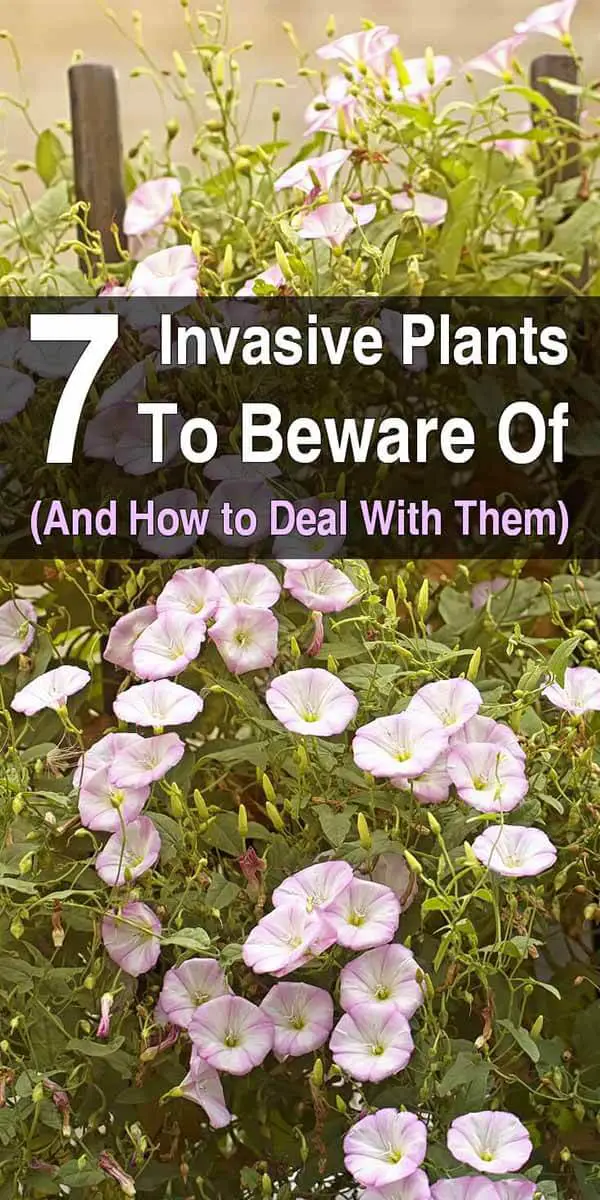
Invasive plants, whether in your garden, lawn or wood lot, can be a major time sink in your landscaping efforts, taking over garden plants and native forest species alike while decreasing ecological diversity, setting back ecosystem succession (growth and evolution), and destroying the habitat of native species.
It is therefore important to be aware of some of the more common invasive plants, both to avoid bringing them onto your land (since many of them are actually sold at garden centers), and to identify and deal with the ones already there.
For context, let’s first take a look at some of the main strategies and terms related to dealing with invasives weeds.
Dealing with Invasives
Solarizing: This involves putting a black or clear tarp or plastic over an area during sunny conditions for 1-3 months in order to cook plants and seeds in the upper few inches of the soil to death. For good measure, it can be used in conjunction with other methods. Black materials are usually best because it heats plants while also cutting off life giving sunlight.
Smothering: This is usually done at least a season before attempting to plant anything else in the area, and can be done via a technique called “sheet mulching” which involves smothering the area in cardboard or newspaper overlapping by at least a foot, to at least 1/8 inch thick. In its simplest form, this is followed by 3-6 inches of mulch.
Sheet mulching can be done to improve soil fertility (which can keep back many types of weeds) by adding alternating layers of compost and fertilizers and carbon rich layers (starting with cardboard, and using mulches such as well rotted and herbicide-free hay or leaves, etc). Always keeping a good layer of mulch on a garden bed will ensure few seeds germinate and make it more difficult for unwanted plants to spread.
Herbicides: Chemical herbicides can do long term soil damage, remaining in the soil for many months or years, not to mention their effect on human health. Natural herbicides include vinegar, neem oil, herbicidal soap, and various organic herbicides on the market. According to a poll from Mother Earth News, many gardeners and farmers find herbicides ineffective compared to other management strategies, but they can be used in conjunction with other techniques for more success.
Outcompeting/Shading Out: Densely planting a diversity of plants you do want in a given area, especially once you’ve eliminated existing unwanted vegetation, may be enough to keep invasives and weeds in check. It is said that nature abhors a vacuum, so if you don’t have anything shading out the ground or taking up soil space, an opportunistic invasive plant is sure to make a home in a given area.
Removing / “Weeding”: This either involves attempting to remove the full plant, including its roots (almost impossible with many plants), or cutting the plant above ground either once or multiple times. This is often not a successful strategy, especially with plants that have extensive root systems, which may simply sprout back as multiple plants (e.g. most grasses, most perennials in general, and many annuals) even when you think you’ve gotten every last piece of root (which you probably haven’t, given the incredible size of many root systems). As in any strategy for invasive weed control, it is important to strike before the plant’s seeds ripen.
The following invasive plants, which you might want to study the pictures of, can all be dealt with using these techniques, but you will benefit from using multiple methods.
1. Garlic mustard / Hedge Garlic (Alliaria petiolate)

Garlic mustard is a quickly spreading biennial in the mustard family that can choke out other plants in shady areas, including native forest plants in the understory. It spreads prolifically by seed.
2. Quackgrass / Couchgrass (Elymus repens)
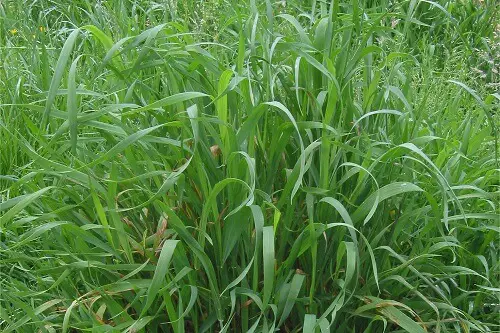
This aggressive grass will set back the growth of or completely choke out even the toughest plant. Pulling it is pointless without including other management strategies. For example: cut or pull it, then pour vinegar on it (if suitably distant from other favored plants), solarize it for a couple of months in the summer, and then sheet mulch, ending with a seedless compost mix and mulch, which you can seed and plant into with favored native and edible species. Solarizing to begin will also work, though may take a bit longer, and should still be followed by sheet mulching.
3. Bindweed / Woodbine (Convolvulus arvensis and related)
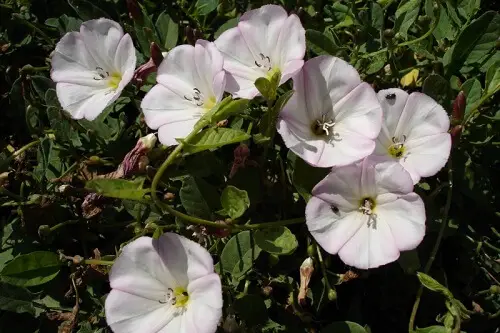
This creeping vine, though deceptively beautiful, will ensnare everything in its path, spreading quickly below and above ground. As with pretty much all of the plants on this list, you’ll need to keep a thick mulch on your soil to ensure its seeds don’t ever germinate.
4. Tansy (Tanacetum vulgare)
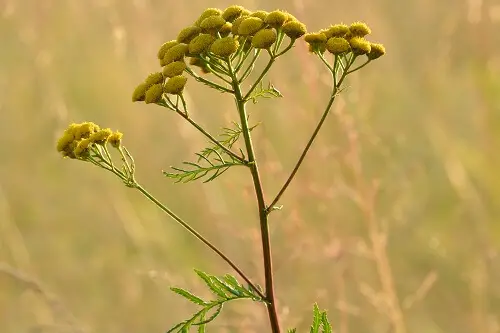
Another beautiful plant that can get out of hand easily. Not recommended unless you want to continually deal with it taking over your other plants. Instead, plant Black Eyed Susan (Rudbeckia hirta) or Ox Eye (Heliopsis helianthoides).
5. Ragweed (Ambrosia psilostachya and related)
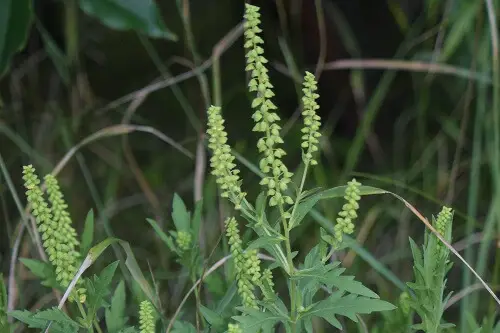
Notorious for causing allergies, herbicide treatments are ineffective in controlling this family of perennial and annual plants, so a more multi-pronged approach is needed.
6. Leafy Spurge
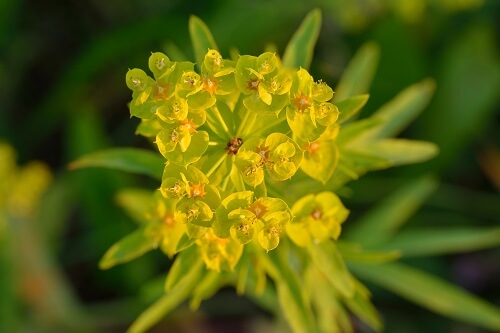
A perennial plant that invaded from Europe in the early 19th century, leafy spurge grows over a meter tall and produces small, yellow umbel flowers. It is found all the way from South America, throughout the United States and up to Canada. This plant is especially bothersome since it produces allelopathic (toxic to plants) compounds that suppress other plants’ growth. The USDA has used insects to defeat the plant, including flea beetles.
7. Winter Creeper / Creeping Euonymus (Euonymus fortunei)
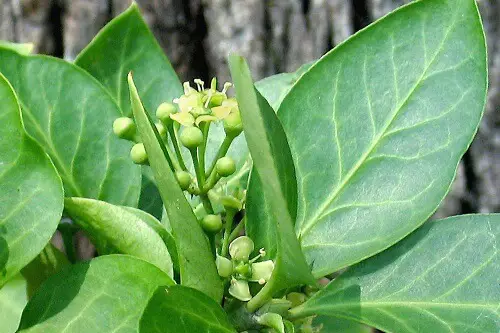
An evergreen shrub from Asia that may also grow as a vine up to 66 feet long, this prolific plant is considered invasive in the eastern United States and Canada. As much of the roots as possible should be removed followed by other methods of control, including ongoing removal of new shoots.
Conclusion
Although “invasive plant” is a bit of a loaded term, and there is a debate in the gardening community about what constitutes such a plant, there can be no doubt that there are many plants that can disrupt the local ecological balance while creating frustration for those tending the land.
The above is only a short list of many plants that may fall into this category, and if you are a land owner or have a garden, it is important to become familiar with your local invasive plants to ensure you don’t inadvertently plant them yourself, or allow them to build their populations in your garden or wider landscape. If you’d like to discuss these or any other particularly nasty invasives, please feel free to comment below!








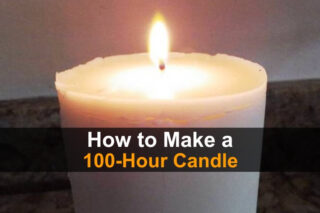
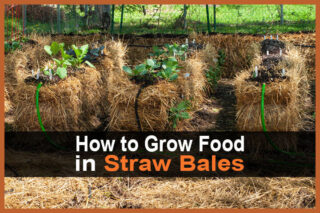

A very useful Garden Crop plant that gives a bountiful food crop. Can get out of hand & take over a garden are Jerusalem Artichokes. I recommend to the homesteaders & survivalist that they plant them as far from the gardens & homestead & use a root barricade. They spread widely by the roots, the edible crop, but also by seeds as they are sunflower family. So growing means getting out to deadhead flowers to prevent seed set. It also means to be constantly alert for seedlings sprouting anywhere. Pull them, dig for the roots then apply boiling vinegar, some even add a pinch of salt, but I set something on top to shade them out. There is also the despicable ornamental bamboo we fought back for 50 years,there is not a trick or treatment we did not try on that awful stuff, nothing worked. We were organic but I would dread to see anybody try Round up on it. It would likely breed resistance in a single season.! Good article, add Pig Weed, Iron Weed, & Datura to the list, pulling is enough but they have pretty flowers! Only takes 1 to get an army started. Plus Datura is Poison. Speaking of poison, Larkspur comes to mind! Why do weeds have to be pretty? Here in NE, it’s a running battle with poison ivy on plowed land & pasture. Eradicating that without chemicals is impossible.
Good advice, thanks for sharing!